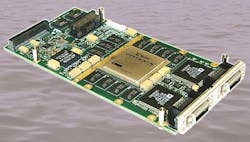Speeding close-air-support kill chain is goal of DARPA/Air Force PCAS research contracts to four companies
The DARPA PCAS initiative will develop new digitally connected equipment to help the JTAC rapidly choose and cue close-air-support aircraft in the vicinity, and enable the strike aircraft to respond autonomously to the JTAC request for weapons delivery. The idea is reduce the time between requesting an air strike and putting bombs, missiles, or other weapons on target.
The latest, and largest, contract for the PCAS program was awarded Tuesday to the Raytheon Co. Missile Systems segment in Tucson, Ariz. Raytheon's contract from the Air Force Research Lab is worth $7.1 million.
In early March, the Air Force awarded PCAS contracts worth $1 million to Vuzix Corp. in Rochester, N.Y.; for $1 million to Total Immersion Software Inc. in Hampton, Va.; and two contracts totaling $1.1 million to Aerius Photonics LLC in Ventura, Calif.
Raytheon is a major defense systems integrator with expertise in command and control; Vuzix makes Tac-Eye eyeglasses-mounted displays for hands free access to situational awareness data and high-definition video; Total Immersion Software makes RealWorld software to help build 3D, geo-specific simulations; Aerius Photonics builds electro-optical components such as infrared detector arrays, laser rangefinders, semiconductor lasers, laser software, optical detectors, and multi-spectral scene projectors.
The initial thrust of PCAS is to build and demonstrate air and ground components able to deploy weapons from an unmanned aerial vehicle (UAV), based on machine-to-machine direct inputs from JTAC equipment.
The program will develop standard equipment to help the JTAC work together with the UAV to provide close air support. The JTAC equipment will interface with the UAV to increase information exchange to reduce time-to- target, visualize available weapons and their effects, and pass-off digital targeting information for weapons delivery. The JTAC equipment should be small enough so that a controller on foot can carry it comfortably. The program will culminate in a live-fire demonstration.
For more information contact Raytheon Missile Systems online at www.raytheon.com/businesses/rms; Vuzix at www.vuzix.com; Total Immersion Software at www.totimm.com; Aerius Photonics at http://aeriusphotonics.com; the Air Force Research Lab at www.wpafb.af.mil/AFRL; or DARPA at www.darpa.mil.
